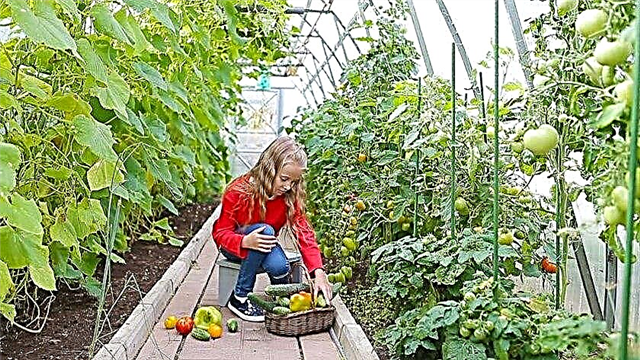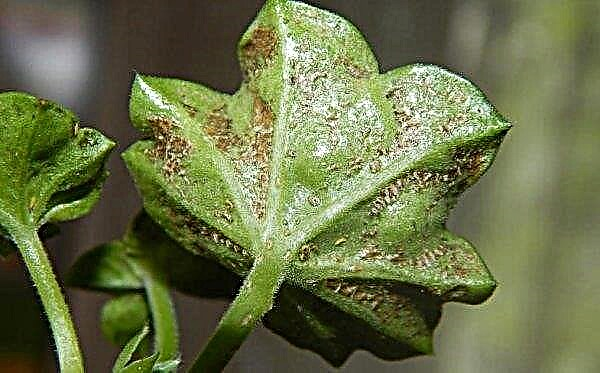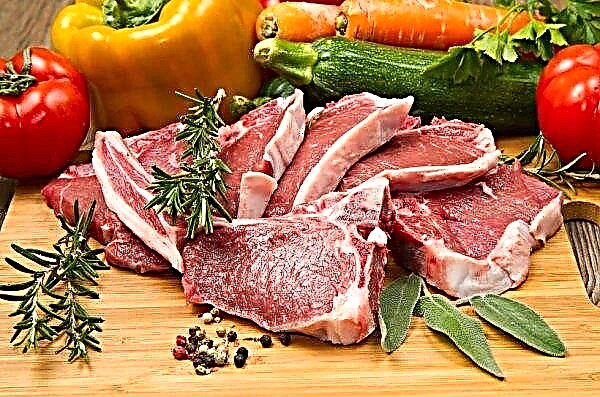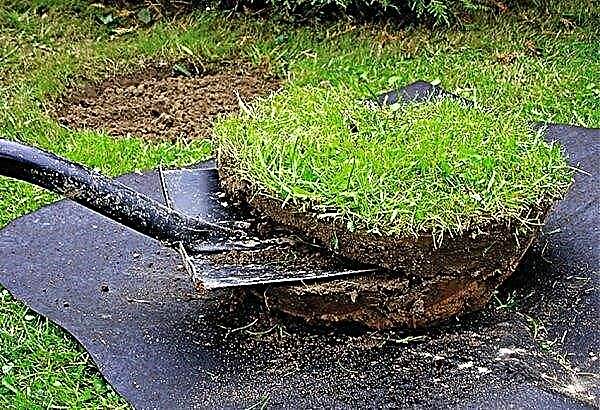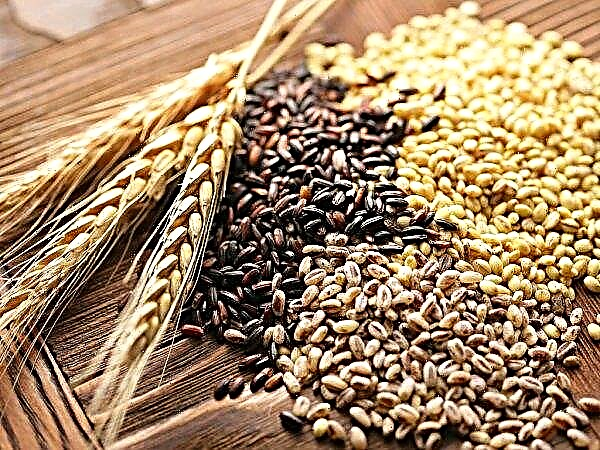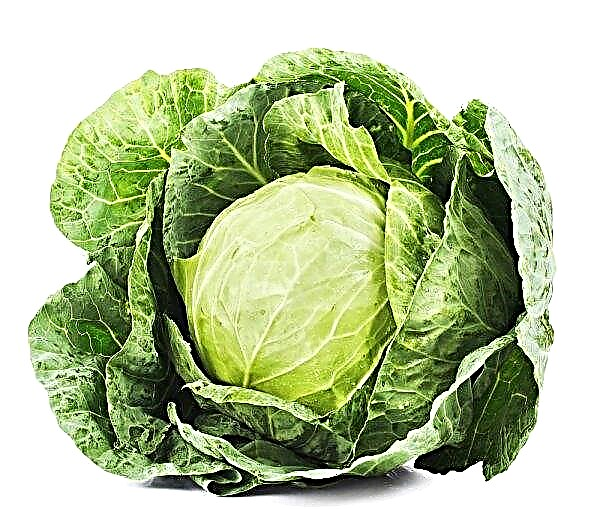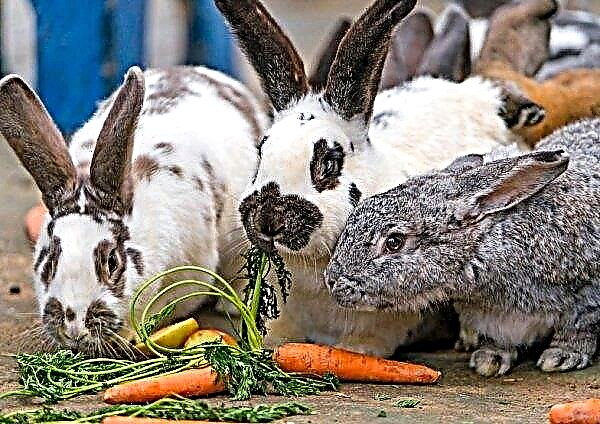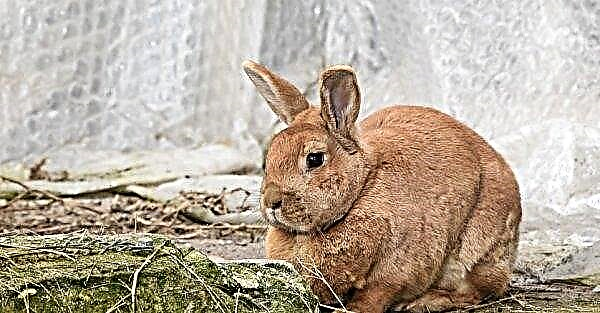There are several reasons that explain why you can not grow cucumbers with tomatoes in the same greenhouse. However, when performing certain agricultural practices and ensuring optimal microclimatic conditions for each crop, it will be possible to get a full crop. By what criteria to grow cucumbers and tomatoes, and how to combine conflicting points in the requirements for agricultural technology, read below.
Is it possible to plant cucumbers and tomatoes in one greenhouse
If the area of your site does not allow you to build 2 greenhouses, then cucumbers with tomatoes may well coexist on the same territory. The catch is that when you receive the same care, nutrients and grow under the same microclimatic conditions, plants significantly reduce productivity. But this nuance can be easily corrected by applying the right agricultural practices for both crops.
Did you know? Freshly squeezed tomato juice helps get rid of excessive sweating. On hot days or in stressful situations, it is taken orally or added to a bathtub.
Cucumber needs
For the full development of cucumbers, it is necessary to provide optimal microclimatic conditions:
- air temperature - not less than + 17 ° С;
- air humidity - 60–80%;
- soil moisture - 50%.
A polycarbonate greenhouse is the best option for growing cucumbers. In a closed space, the air is stationary, the soil warms up quickly and cools slowly, which significantly increases productivity. The above temperature value is the minimum value. The ideal temperature, providing full pollination and fruiting, is +26 ... + 30 ° С. When the temperature drops to + 10 ° С, the plants begin to freeze and wither.
Large foliage evaporates a large amount of moisture, and if the plant does not have time to restore its deficiency, the nutrition of the roots will slow down. On hot days, plants need not only watering, but also moisturizing according to the leaf. Periodically, cucumbers in greenhouses need to arrange a 2-3-hour steam room - all the gaps are closed in the room and abundant irrigation of leaves, walls and soil is carried out. After such a reception, cucumbers quickly grow. The main thing: make sure that the leaves and stems do not come into contact with the ground.
Window leaves should be equipped in the greenhouse, but they are opened much less often than when growing tomatoes. Cucumbers are more suitable for slightly stagnant air with a large amount of carbon dioxide.
Did you know? The weight of the ground part of the cucumber exceeds the weight of its rhizome 200 times.
Tomato needs
Tomatoes for full development need:
- air temperature - +13 ... + 25 ° С;
- air humidity - 60%;
- soil moisture - 50%.
When the temperature drops to + 10 ° С, the plants begin to wilt, growth retardation is observed. The optimum temperature on hot days for tomatoes is from + 18 ° C. In high humidity, tomatoes begin to suffer from fungal diseases.
In the greenhouse, an elementary ventilation system must be equipped. Tomatoes need a constant influx of fresh air.
Video: Is it possible to plant cucumbers and tomatoes in one greenhouse
The best varieties for co-cultivation
The first step to successfully combining two cultures in one territory is to select varieties that can quickly take root in approximately the same microclimate conditions. Today it will not be difficult to do this thanks to the work of breeders. It is better to choose hybrid varieties.
Suitable varieties of tomatoes for the greenhouse:
- Cavalcade;
- Volgograd
- Siberian;
- Ural;
- Evpatoria;
- Bolkonsky.
- Zozulya;
- Amur;
- Baby
- Connie;
- Athlete;
- Claudia
- Prestige.
Optimal conditions for growing crops
If you decide to grow tomatoes with cucumbers together under one shelter, then the most optimal way to create more or less acceptable conditions for them is physical separation. Crops need to be planted in different parts of the structure and equip a film partition between them. This technique will allow you to control the humidity in the room and air the planting of tomatoes. The separator should pass not only along the upper part, but also along the ground. This is necessary to control soil moisture. Between landings, it is best to dig a sheet of roofing material or iron.
In the part intended for tomatoes, it is necessary to make 2 air vents, which will provide through ventilation. In the compartment, adapted for cucumbers, you need one window.
The low compatibility of crops implies the exclusion of such an agrotechnical event as a steam room for cucumbers.
Compromise microclimatic indicators for the joint cultivation of both crops in the greenhouse are as follows:
- daily temperature - + 25 ° C;
- night temperature - + 20 ° С;
- humidity is 70%.

How to plant and care for cucumbers and tomatoes in a greenhouse
Before planting, you need to take care of the preparation of the soil. Soil requirements for crops are almost the same. They need a light nutrient substrate that is well moisture-permeable, with a neutral pH level of 5–6.
After harvesting from the greenhouse, the upper 20 cm of soil should be replaced with a new substrate.
To do this in equal parts mix:
- peat;
- sand;
- compost.
Before planting, the soil is carefully loosened and spilled with a hot solution of wood ash: 500 g of ash are added to 10 liters of water, boiled for 15 minutes and then the solution is immediately poured into the soil. After a week, they again loosen and make markings for the beds.Important! When planting tomato seedlings, the tip of the central root cannot be removed. This will reduce its growth rate, which will negatively affect the processes of metabolism and plant nutrition.
Landing pattern
In the greenhouse, 2 beds are formed in width, not exceeding 90 cm. On beds between cucumbers, 40 cm are left, between tomatoes - 50-60 cm. The beds can form flush with the ground or be bulk. A convenient option is the formation of bulk beds for tomatoes to a height of 35 cm. This will protect the tomatoes from overheating of the rhizome. The distance between cucumbers and tomatoes should be at least 1 m.
When co-cultivated, do not immediately sow the seeds in the soil, it is better to use the seedling method. When planting cucumbers in each hole add 1 tbsp. l wood ash on a glass of compost. When planting tomatoes in each well add 1 tbsp. superphosphate. Before planting tomatoes, it is also necessary to arrange a drainage layer in the hole - it can be expanded clay or broken brick.
Video: Cucumbers and tomatoes in one greenhouse
Watering and fertilizing
An important nuance is watering, because cucumbers will need it daily, and for tomatoes it is enough 1-2 times a week. Hydrogel will help to correct the situation with watering. It must be introduced into the soil at the time of planting cucumbers. 10 g of hydrogel is poured overnight with 3 liters of water. When soaked, the hydrogel balls increase their mass by 300 times, saturating the liquid. 100 g of the prepared hydrogel are placed on each well and seedlings are planted directly on it. When watering, cucumber roots will receive moisture directly when they need it, and tomatoes will not suffer from its overabundance.
Important! If after planting you still have a ready-made hydrogel, put it in a bag and send it to the freezer. In a cold environment, the product crystallizes again and becomes suitable for storage and subsequent use.
If the hydrogel could not be obtained, then properly organized mulching of the soil will help to reduce watering. Immediately after transplantation and plentiful watering, it is necessary to lay a layer of mulch 8-10 cm around the stem. As a raw material for mulch, you can use rotted compost, green grass. The most important thing: all the time to plant the mulch so that its height constantly remains within 8-10 cm.
In the process of overheating of the lower layers of mulch, heat will be released, which contributes to better development of the roots of the cucumber, while moisture will be retained in the soil. Providing normal conditions for cucumbers, watering can be done 2 times a week, as well as 1 time to sprinkle.
Tomatoes with a relative humidity of 70–80% can not be watered at all. To do this, at the stage of planting seedlings at a constant place in the hole make 1 tbsp. superphosphate and feather of a bird (50 g). 5 l of water for high bushes and 3 l for low bushes are poured into each well. After that, the soil is thoroughly mulched with several layers of newspapers. If everything is done correctly, then the central root will begin to reach down for moisture, which descends along the soil layers and lingers at a depth of 1.5 m. So the root will have the opportunity to absorb enough water, and you will no longer need watering.
Tomatoes should not be mulched with organic matter, since moisture evaporates from it both up and down, and newspaper sheets will provide air drying and protect plantings from infection with late blight.
Garter
Near the beds at the time of planting, they install supports or immediately make trellises:
- horizontal - for tomatoes;
- vertical - for cucumbers.
For garter cucumbers, it is better to use special plastic fasteners, which are installed under the third sheet. The main stalk is immediately attached to a rope extending from the trellis. Subsequently, the plant itself will braid the support, and you will only need to remove the stepsons in a timely manner.
It is also better to tie tomatoes immediately so that they do not lose shape, and then, as they grow, arrange branches at different levels of the trellis.

Formation
The best option for the formation of bushes in the greenhouse for both crops is one stalk. This saves space and makes harvesting easier.
If varieties of indeterminate type were selected, then you will have to pinch the growth point at a height of 100-150 cm, depending on the size of the room.
Throughout the growing season, all lower leaves growing at a height of 10-15 cm from the soil level must be removed. When forming bushes in one stalk, all extra stepsons must be removed when they reach a length of 2-3 cm.
Co-Growing Tips
To increase crop yields, adopt a few more recommendations:
- The difference in day and night temperatures should not exceed 5 °.
- It is best to have greenhouses from north to south. In this case, the arrangement of cucumbers in the northern part of the structure, and tomatoes in the southern, will be successful.
- Choose self-pollinated varieties of cucumbers and tomatoes for co-cultivation.
- It is better that the flowering of crops is not simultaneous, but alternate.
- During the flowering period, shake the bushes in the hottest daytime hours so that the pollen moves freely from the upper inflorescences to the lower ones.
Common mistakes when landing together
The most common mistakes that farmers make when co-growing tomatoes with cucumbers are:
- placement of both crops on one bed;
- neglect of the nuances of physical separation;
- thickening of landings.
